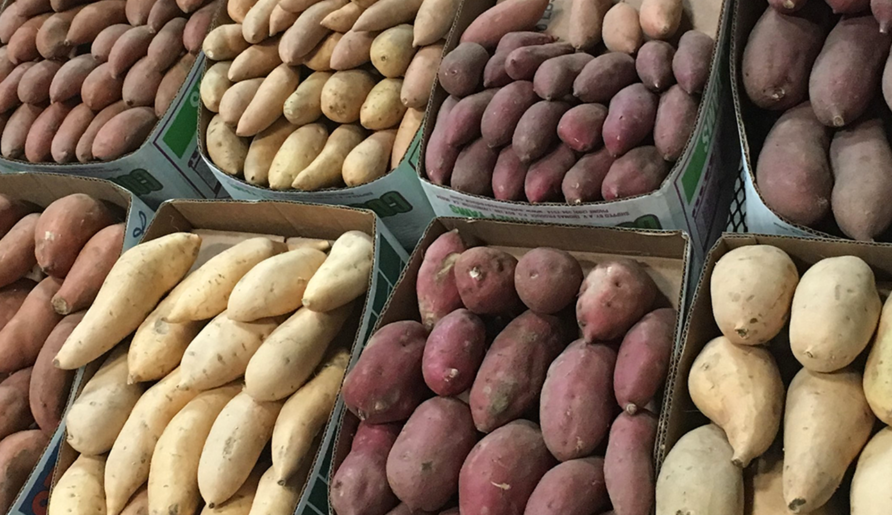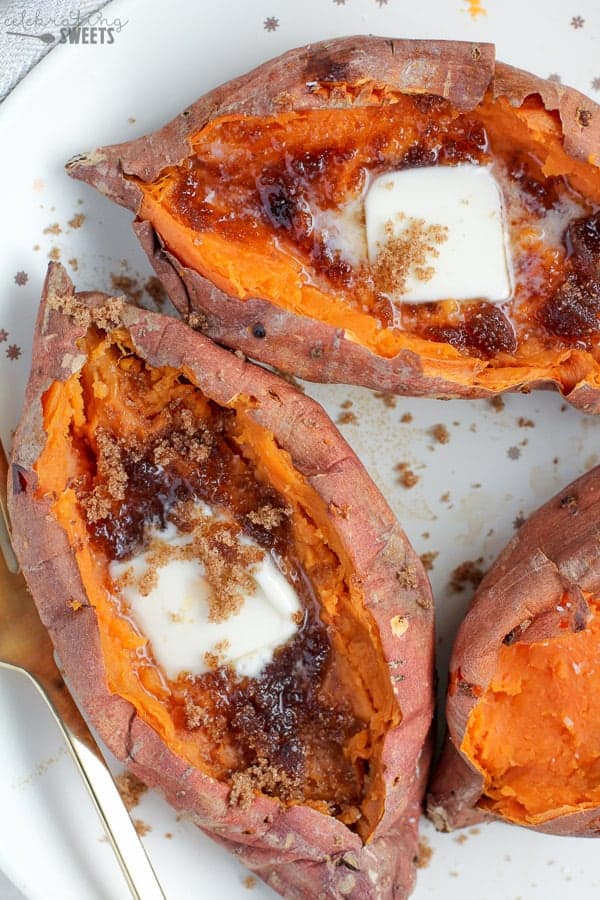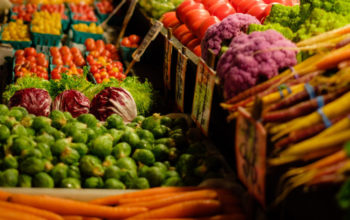Most of the “yams” you’ll find in American grocery stores are actually sweet potatoes.
Here’s how to tell the difference
Written content from Laurel Randolph
Sweet potatoes are often called yams, but they are actually two completely different vegetables. Yams are tubers with rough, brown skin that are grown in Africa, Asia, and the Caribbean. Sweet potatoes have smooth skin and the flesh can range from white to orange to purple.
One of the biggest mysteries at the supermarket involves sweet potatoes and yams. You’ll often see the two terms used in equal measure in the produce section.
“Depending on the grocery chain and their philosophy, you will see [sweet potatoes] labeled interchangeably,” says Michelle Grainger, executive director of The North Carolina SweetPotato Commission.
But sweet potatoes and yams are two completely different vegetables, and most of what you find at the typical American grocery store are actually sweet potatoes.
Yams are a rough-skinned, starchy veggie with pale flesh, while sweet potatoes are smaller and tapered with smooth skin. Yams are commonly cultivated and consumed in parts of Africa, South America, Asia, and the Caribbean.
There’s a very good chance that if you’re buying “yams” at an American grocery store, they are actually sweet potatoes. This includes canned yams and candied yams, which are all made from sweet potatoes.
Even though they are completely different vegetables, yams and sweet potatoes get lumped together because of bad marketing. The confusion all started when the orange-fleshed variety of sweet potatoes was introduced to the United States in the 1930s.
“In order to distinguish it from the white variety [of sweet potato] everyone was accustomed to, producers and shippers chose the English form of the African word ‘nyami’ and labeled them yams,” says Grainger. Enslaved Africans in the United States were already referring to existing sweet potatoes as yams because of their resemblance to the African staple crop, and the name stuck.
Unless you shop at a grocery store with an impressive international produce department or are visiting an African or Caribbean market, you likely won’t come across true yams in the US. They are considered a specialty item and don’t typically make it into a standard American produce section. If you see a vegetable or canned good labeled as a yam, it is most likely a sweet potato.
“A true yam is a starchy edible root of the Dioscorea genus,” says Grainger. It plays an important part in West African, Central African, Caribbean, and other cuisines. Like sweet potatoes, a number of yam varieties are cultivated, some reaching several feet long.
Yams have a rough, brown outer peel that is scaly and similar to thin tree bark. The hard, somewhat dry interior (which softens upon cooking) is frequently white or off-white in color, but some varieties have purple or pink flesh. Their size and shape can range from sweet potato-like to thick cylinders that are several feet long.
The similarity of certain yam varieties to the size, shape, and color of pale-fleshed sweet potatoes is what led to the naming confusion in the first place.
Yams have a starchy texture and a largely neutral flavor. They hold a mild earthy taste that can be slightly sweet once cooked, and yams eagerly take on the flavors of whatever is cooked or served with them.
In parts of Africa, yams are boiled and mashed, or pounded to create a starchy, filling base for sauces and stews. The tuber can be dried and turned into flour for porridge, steamed, chopped and fried, and more. Purple yams, often called ube, have a sweet, toasty flavor when cooked and are popularly used in desserts throughout Asia. Read more from BI






